Ice shelf morainesRidges of ice-cored debris fringe the edges of the McMurdo Ice Shelf and some extend well into the middle of the ice shelf. Few studies have ever been made of these features, so we undertook detailed inspection of those at the northern edge of Minna Bluff. The mounds and ridges of debris were found to over-lie more marine ice, and our hypothesis is that the debris accreted at the base of the ice shelf when it touched sea-bottom. |
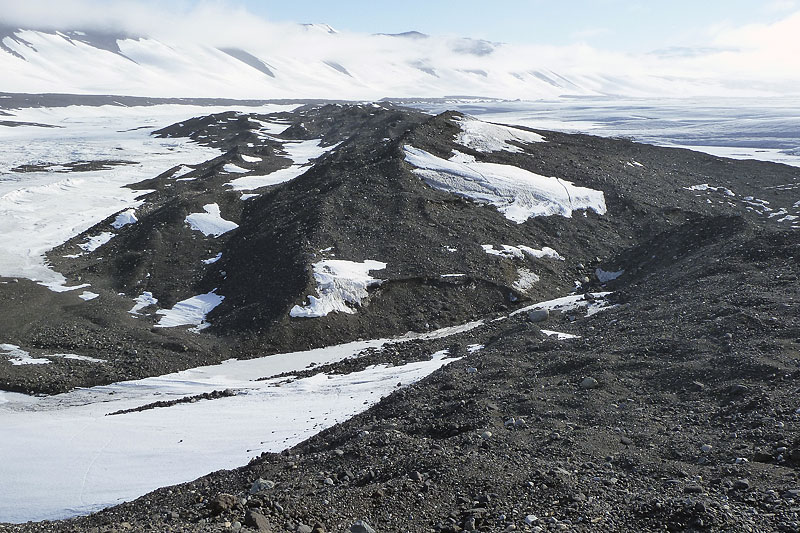 Ice-cored hummocky moraine adjacent to Minna Bluff. | 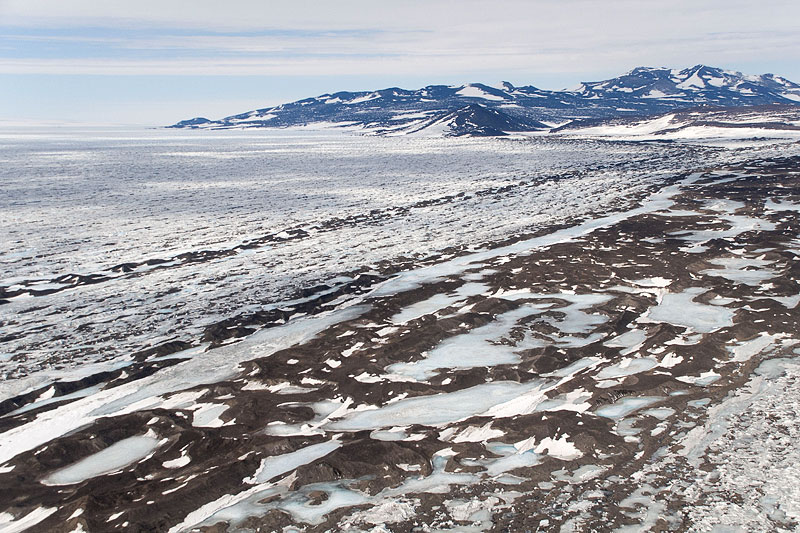 Aerial view of moraines on the ice shelf surface near Brown Peninsula. | 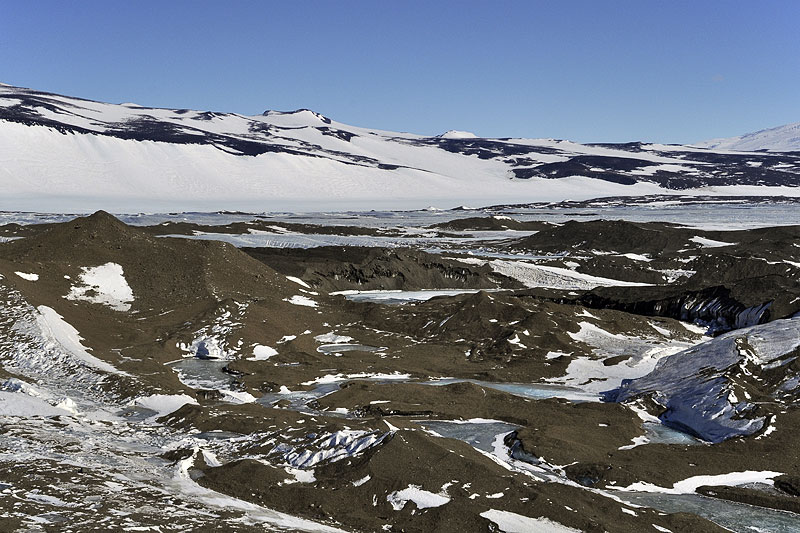 Frozen ponds viewed from ground level in a moraine extending from the shore at Minna Bluff (background). | 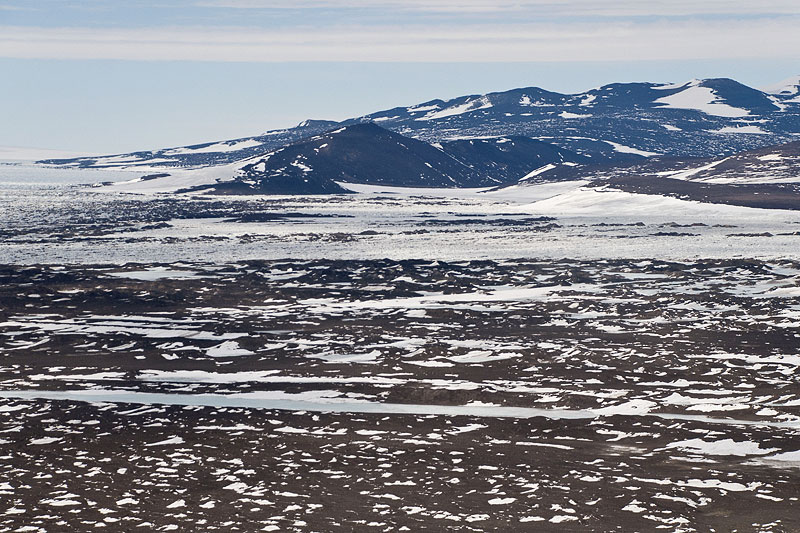 Aerial view of moraines adjacent to Black Island**. |
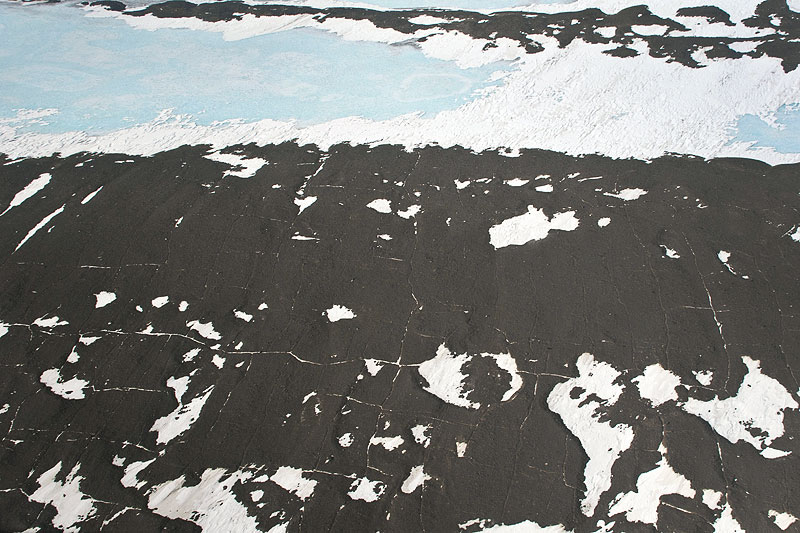 Aerial view of frost contraction cracks in the moraine on the ice shelf surface between Brown Peninsula and Black Island. | 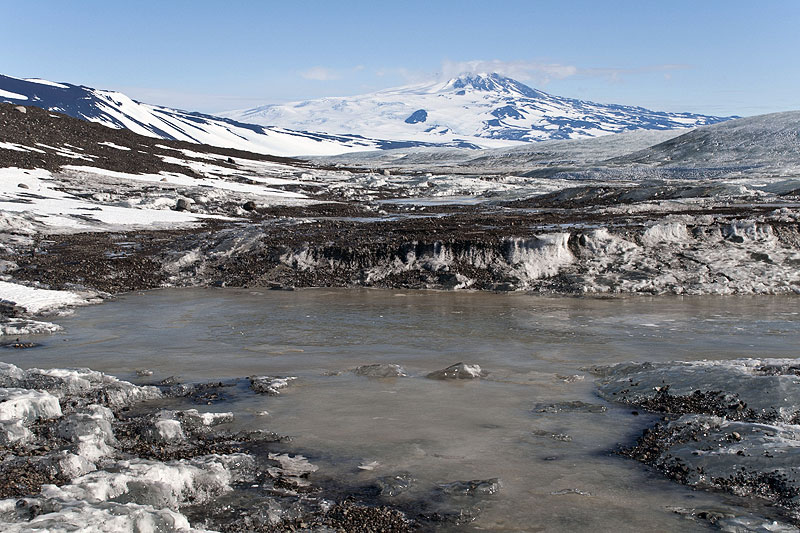 A seep of saline water refreezes to sticky ice in a meltwater channel at the margin of the ice shelf near Minna Bluff. | 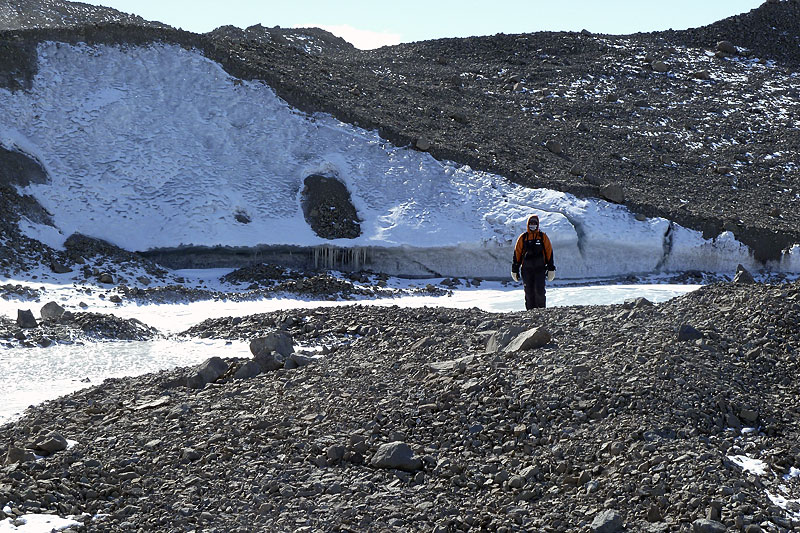 Uniform layer of sandstone cobbles in moraine extending north from Minna Bluff. This represents a sheet of former sea-floor lifted from the bed during a grounding event. It overlies marine ice accreted at a later stage. | 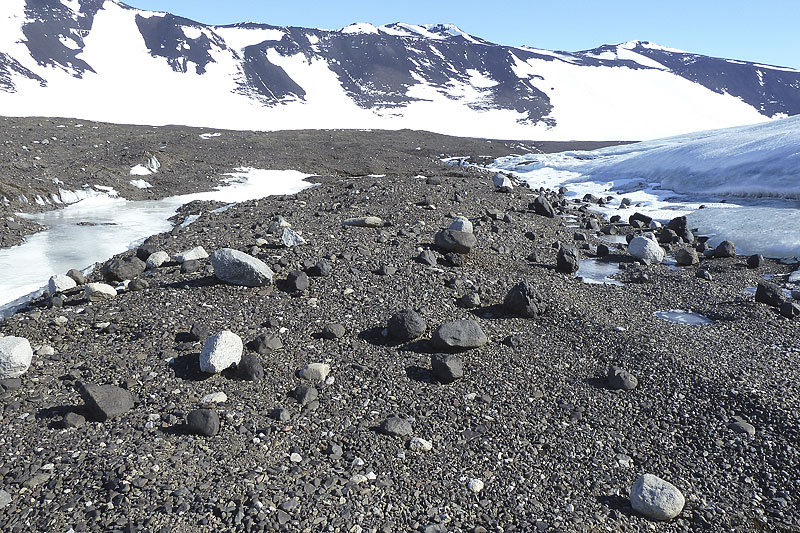 Cluster of assorted boulders on a pebble-cobble surface in the transition zone from ice shelf to ice-shelf moraine, adjacent to Minna Bluff (east). |
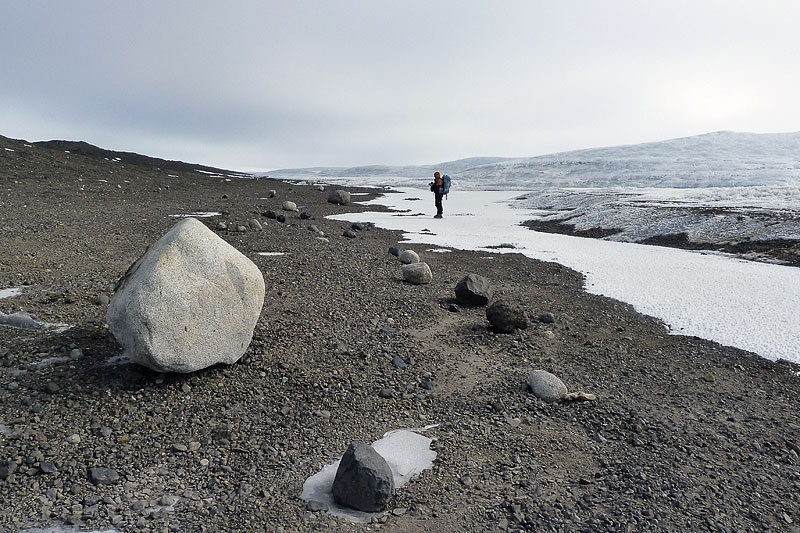 Another cluster of boulders, of granite and dolerite, on a pebble-cobble surface in the transition zone from ice shelf to ice-shelf moraine, adjacent to Minna Bluff (central). | 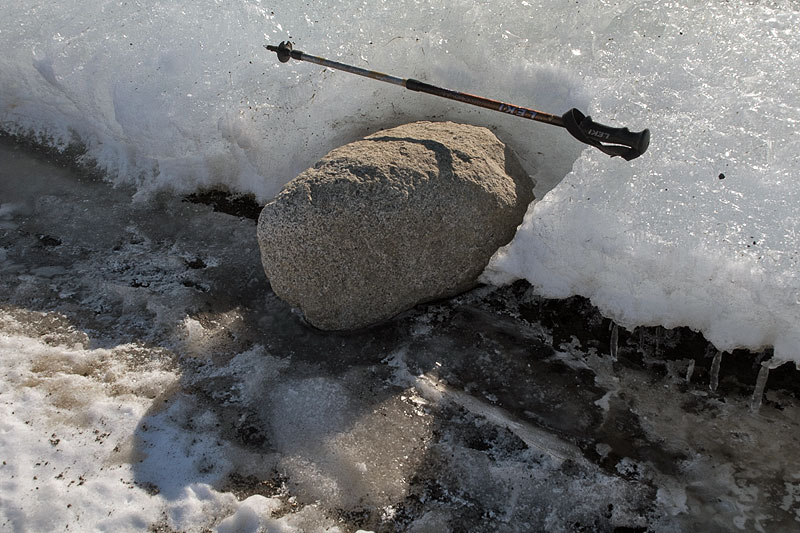 Boulder of granite emerging from a marine-ice layer adjacent to the ice shelf moraine at Minna Bluff (central). | 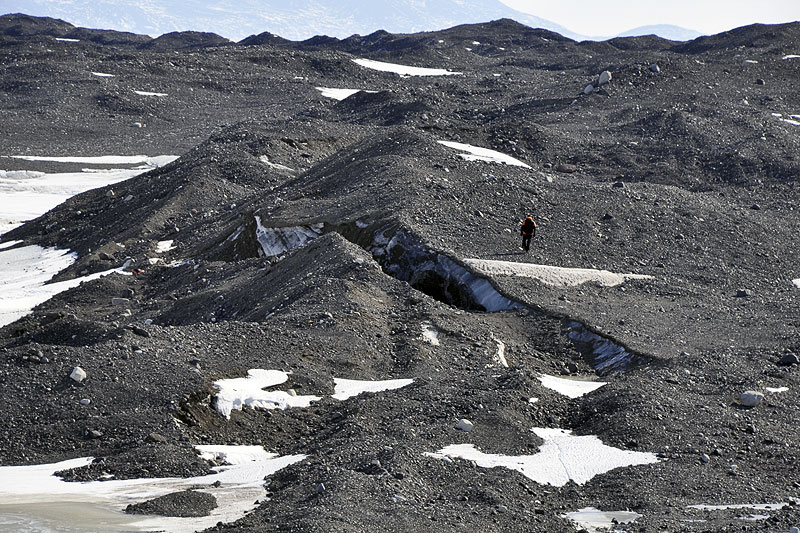 Hummocky moraine underlain by marine ice at Minna Bluff (central). The ice-scarp face represents a tide-crack in the moraine. | 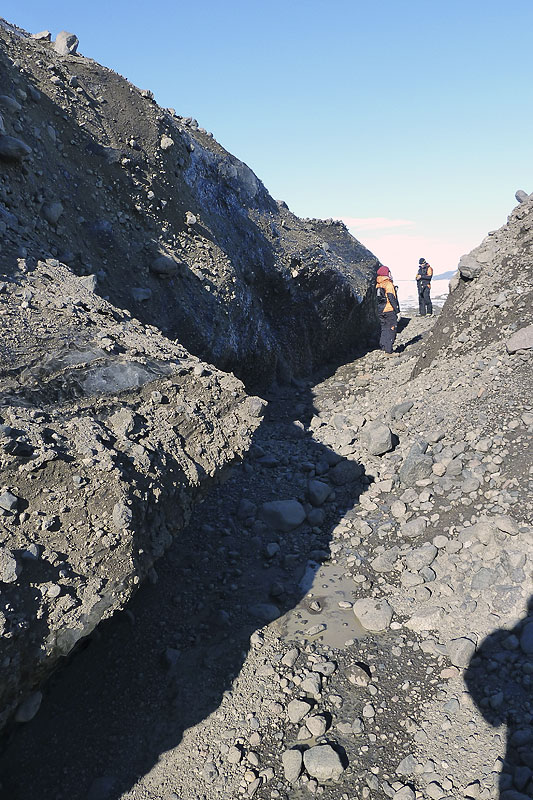 Close up of the tide-crack shown in the previous picture where it has developed into a rift-like structure. |
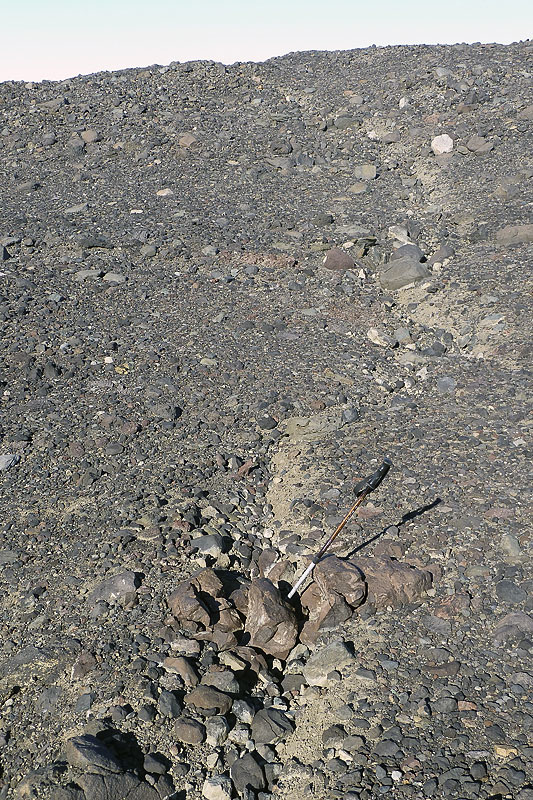 Active tide-crack in ice shelf moraine sediment, showing disturbance of the matrix of sandy gravel below the gravel lag. | 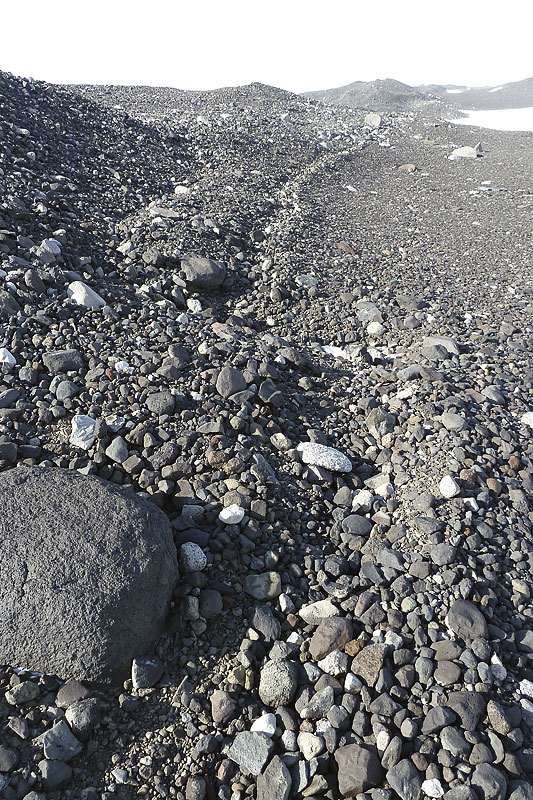 The tide-cracks are rarely straight, and in this instance the crack has been offset by a fault. | 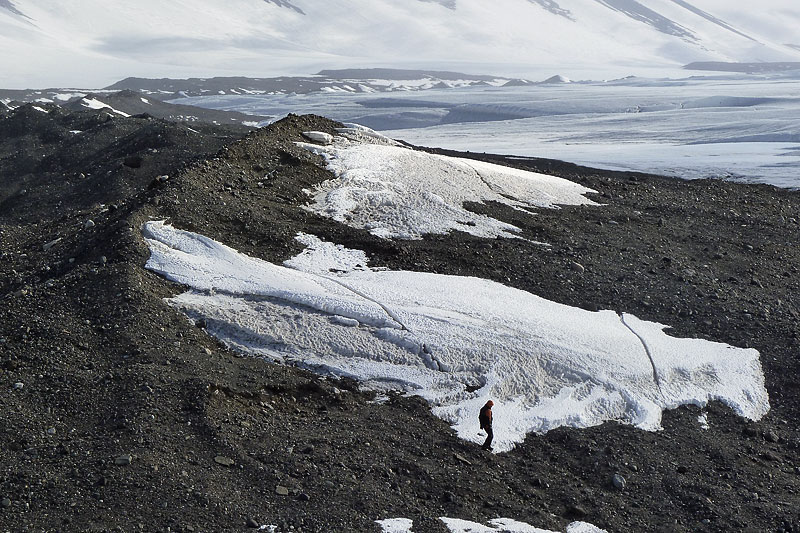 These fractures across snow patches demonstrate that the tide-cracks are active. Indeed, standing close to them, we can here the ice cracking. | 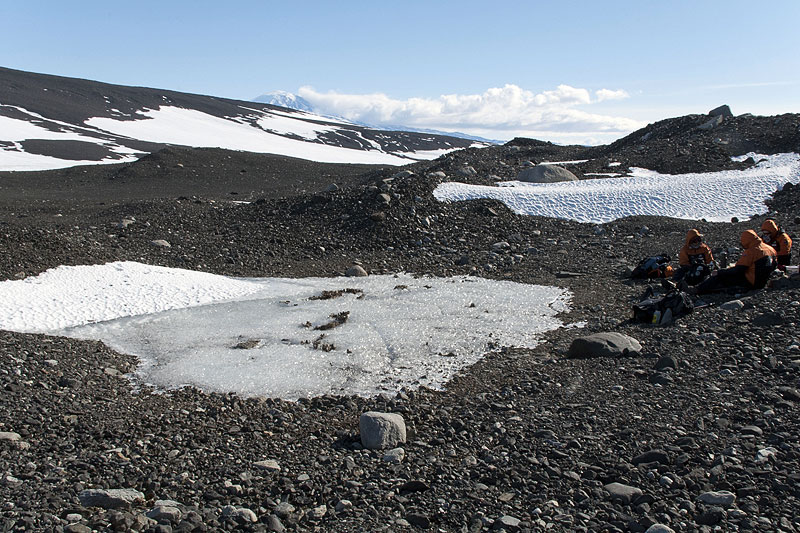 General view of a pond in the ice-shelf moraine at Minna Bluff where algal mounds called "stromatolites" have formed. |
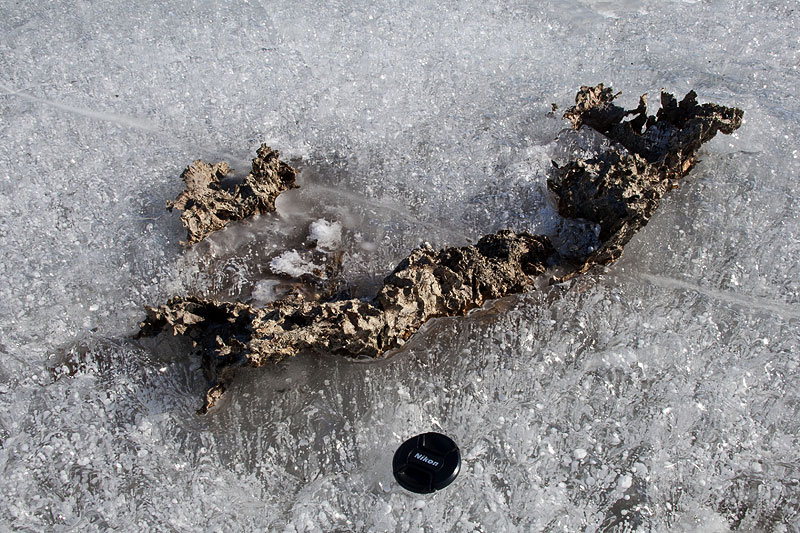 Close-up view of stromatolites, anchored to the bottom of the pond. This algal growth has the texture of rough cardboard. The pond here is totally frozen and sublimating. | 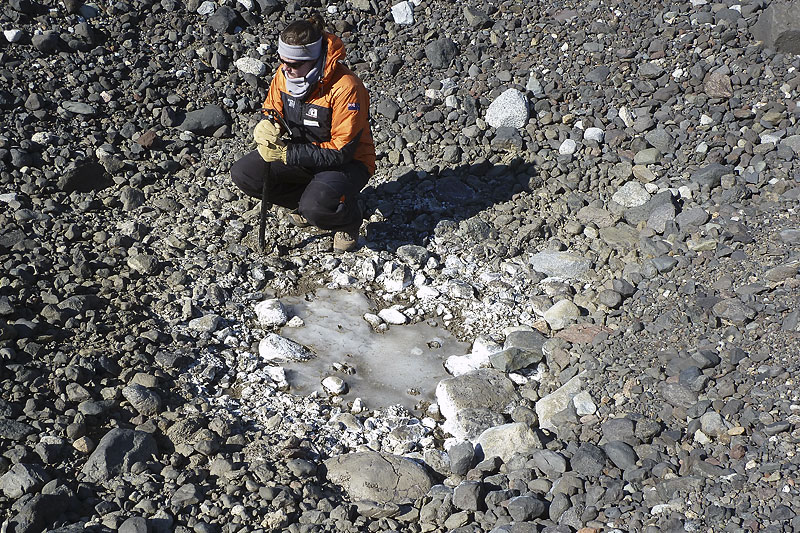 Sublimation of pond ice concentrates dissolved minerals. Here a white gypsum deposit is the result of this process. | 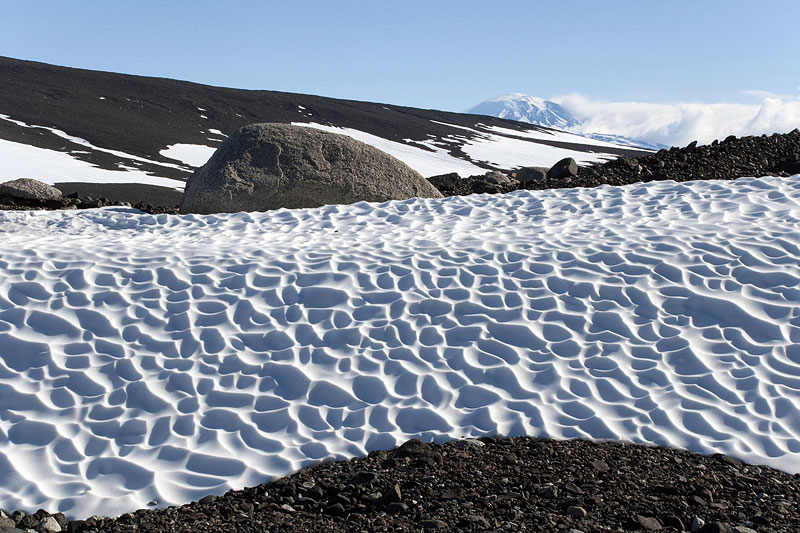 Katabatic winds are fierce adjacent to Minna Bluff and little snow settles. The snow that does is subject to the combined effects of sun and wind, producing a scalloped surface. | 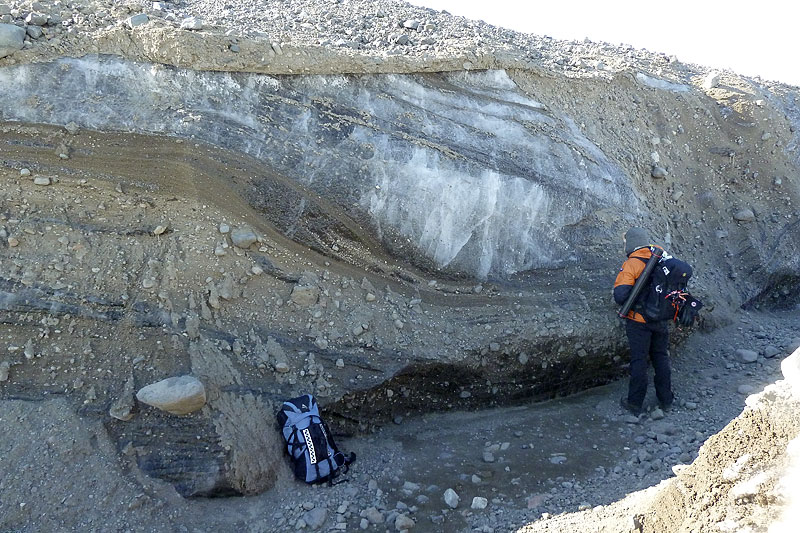 Complex accretion processes occur when the ice shelf grounds on the sea bottom, producing interbedded basal glacial debris and marine ice. |
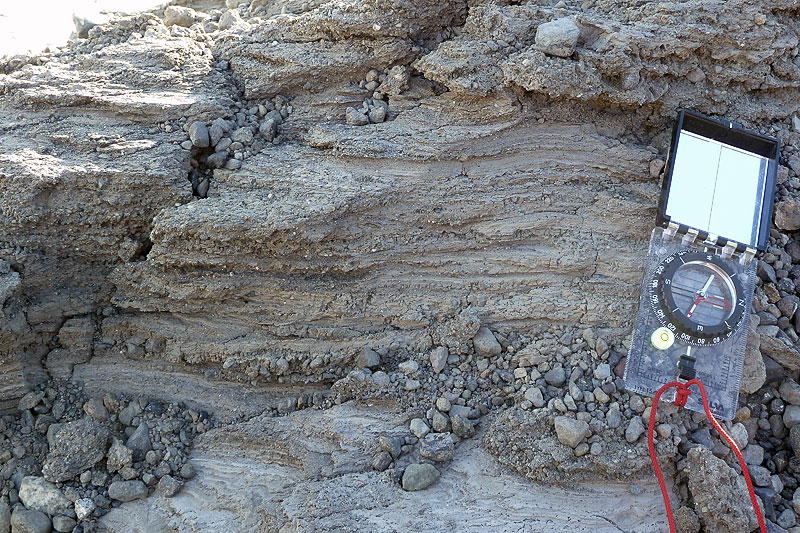 The debris-laden ice is subject to sublimation, so in places the surface of the ice-shelf moraine has diamicton and sandy gravel that preserves the original layered structure. | 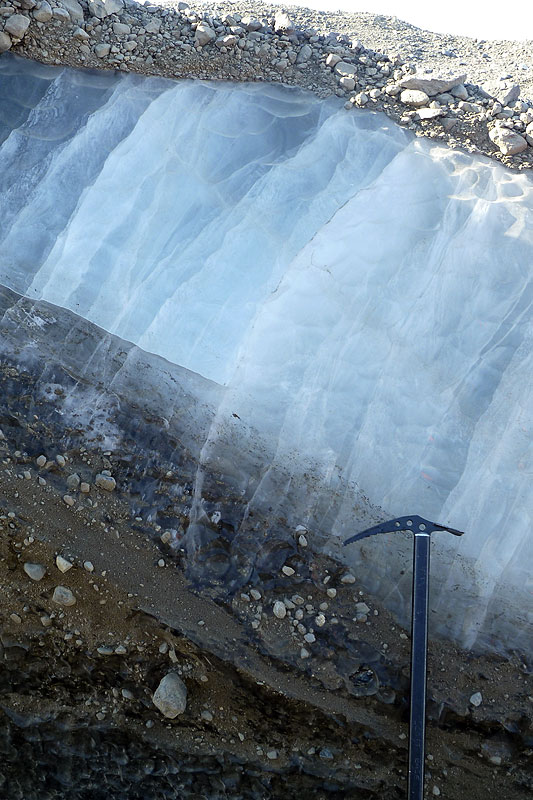 Close-up view of fractured marine ice in the ice-shelf moraine, bounded by layers of basal glacially derived layers of debris. | 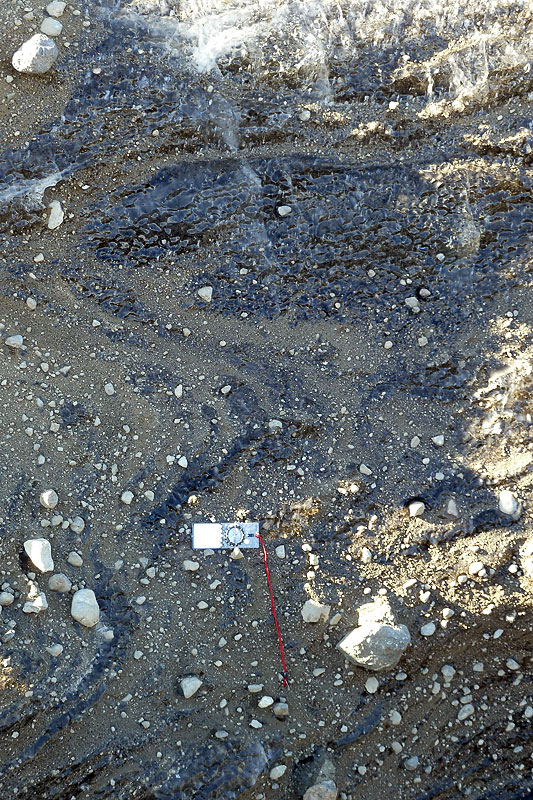 The ice in this marginal zone is locally subjected to strong deformation, as here in the form of recumbent folds. | 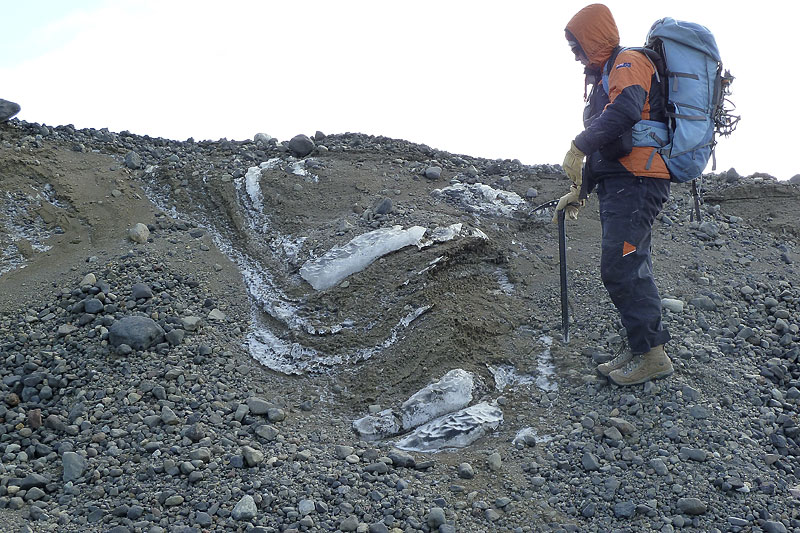 Upright folding of interbedded marine ice and basal glacial debris in the ice-shelf moraine. |
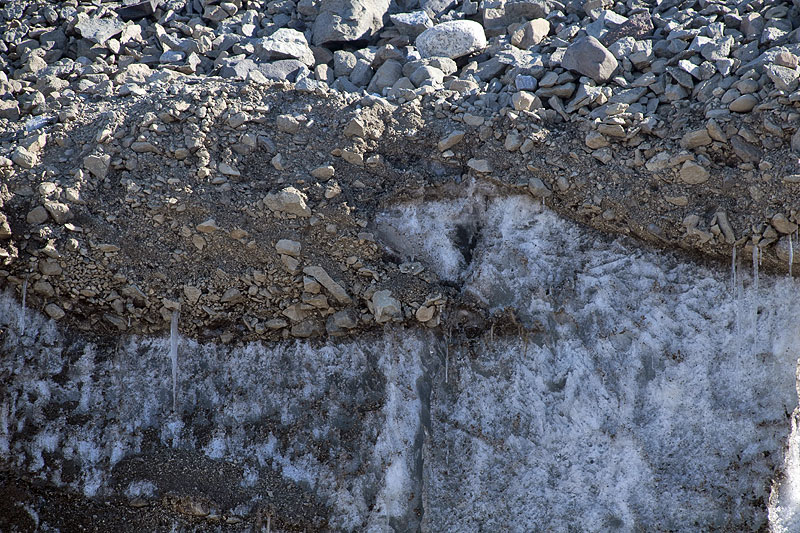 Another over-turned fold comprising marine ice and debris in the ice-shelf surface moraine that extends from Minna Bluff northwards. | 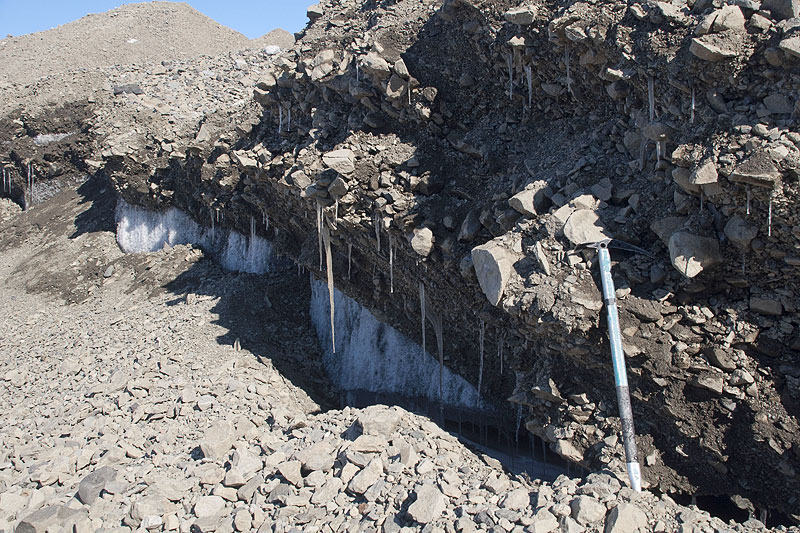 Brittle failure in the form of low-angle thrusts is another manifestation of deformation, in this case in the surface moraine that extends from Minna Bluff. | 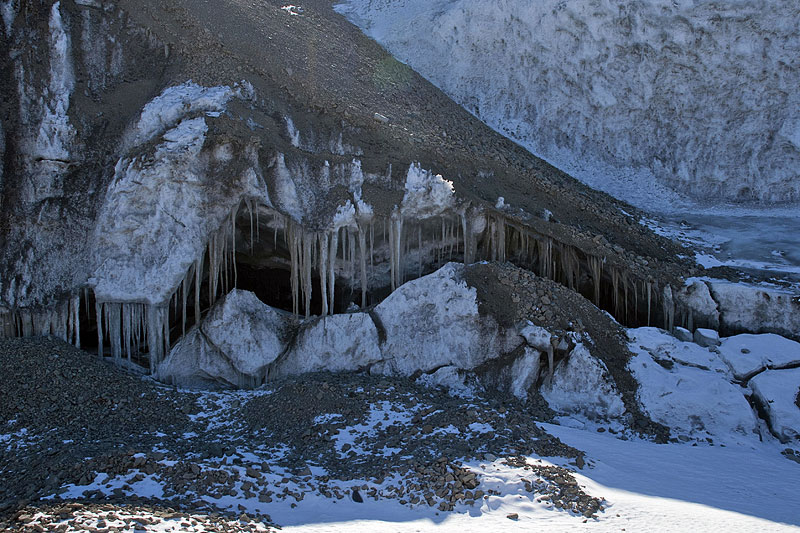 Another example of a thrust in the surface moraine that extends from Minna Bluff. | 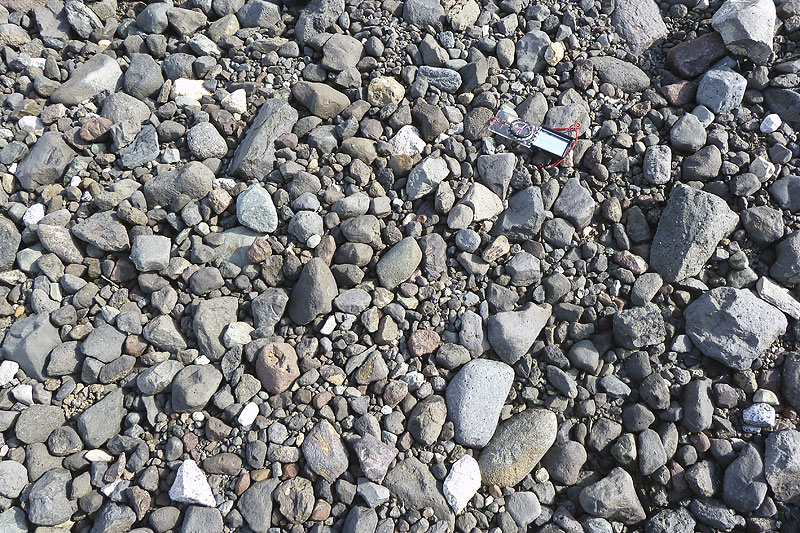 Well-sorted pebbles and cobbles, representing a former current-winnowed sea floor on the ice shelf surface near Minna Bluff. |
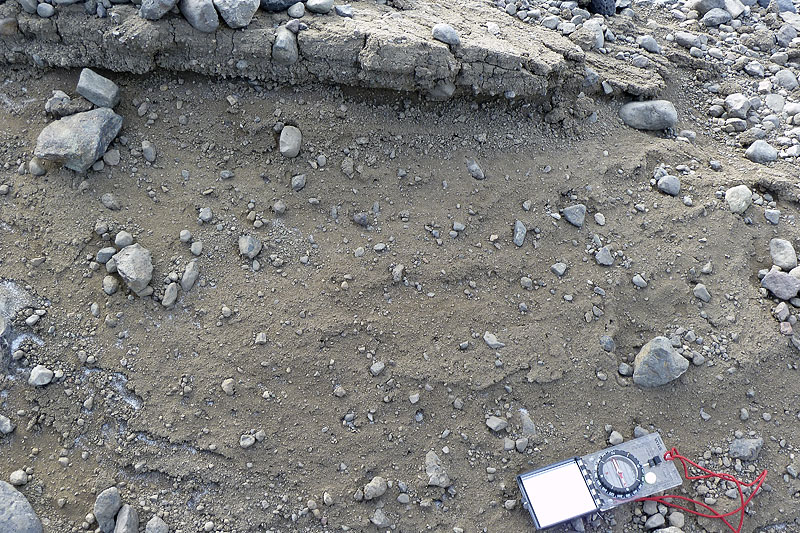 Although most of the material in the moraines is sandy gravel, sometimes the sediment can be classified as a diamicton if sufficient fines are present. This is an example of sublimated debris-rich ice producing a diamicton. | 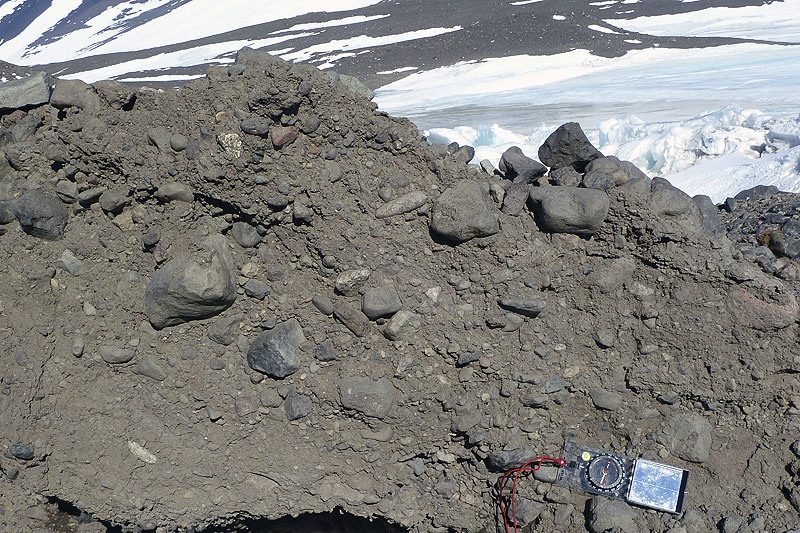 A sandy gravel exposure in the moraine that has been little-disturbed since in was sublimated out from debris-rich ice. | 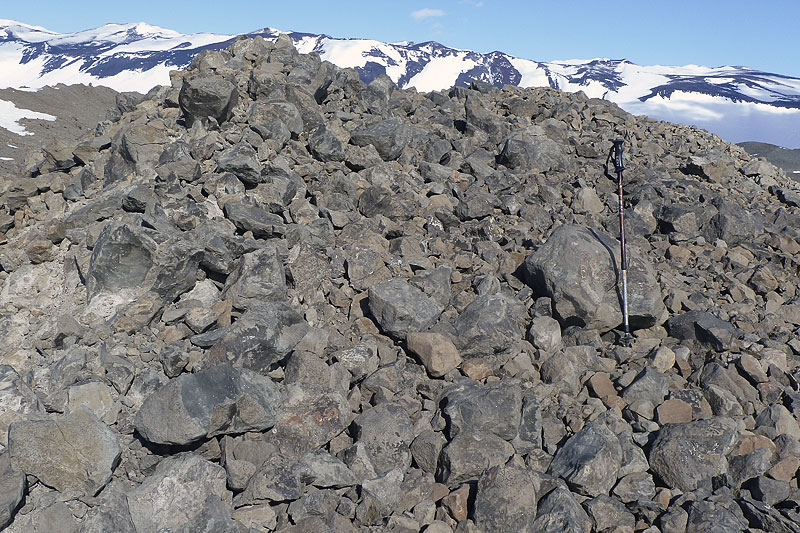 Angular and subangular blocks of sandstone in the moraine that extends from Minna Bluff northwards. The angularity suggests that bedrock is not far below, and that the ice shelf may be grounded at this location. | 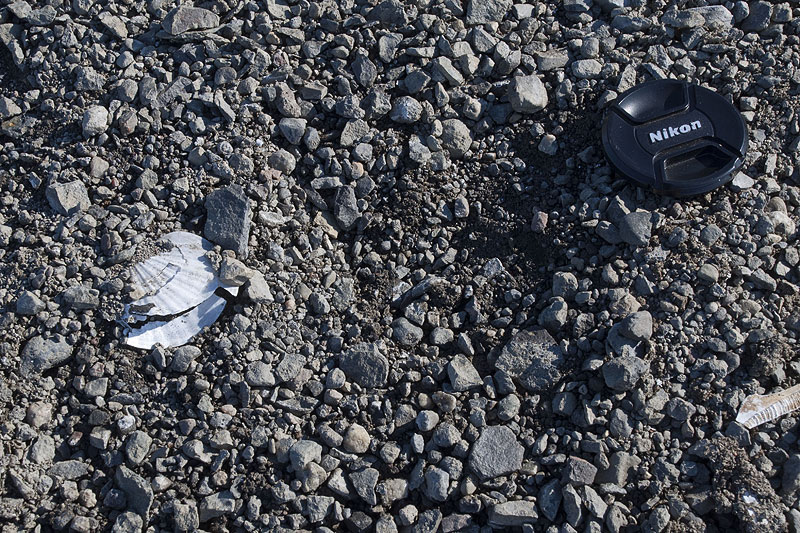 Muddy gravel with shell fragments in the ice-shelf moraine. |
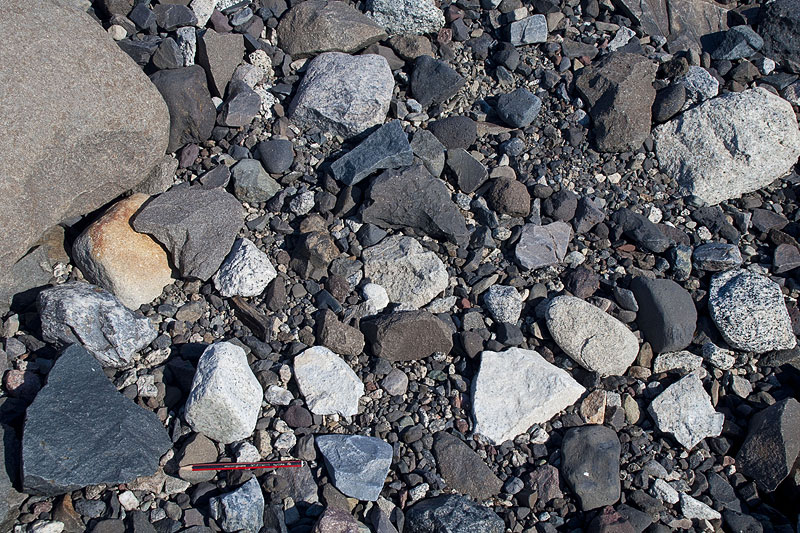 This mixture of moraine lithologies indicates that the debris has come from both local sources (Minna Bluff Cenozoic volcanics) and distal sources (metamorphic and sedimentary rocks of the Transantarctic Mountains). | 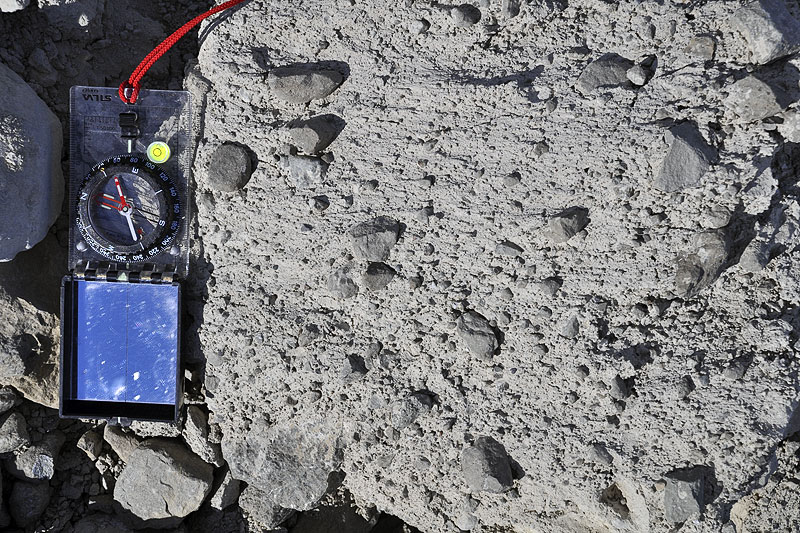 Diamicton that has been sublimated from debris-rich ice in the ice-shelf moraine. The shear structures suggest this was originally a basal till. | 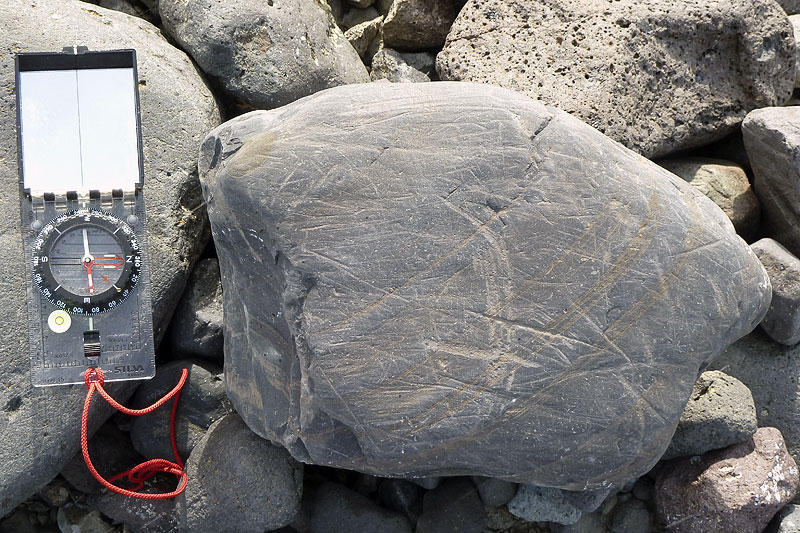 A heavily striated stone in the ice-shelf moraine, strongly suggestive of subglacial transport. | 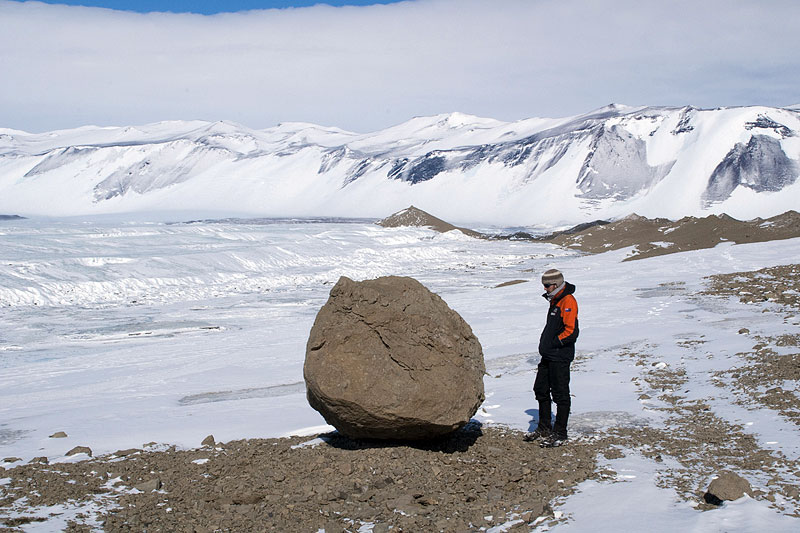 A large granite erratic sitting on top of the ice-shelf moraine at Minna Bluff. |
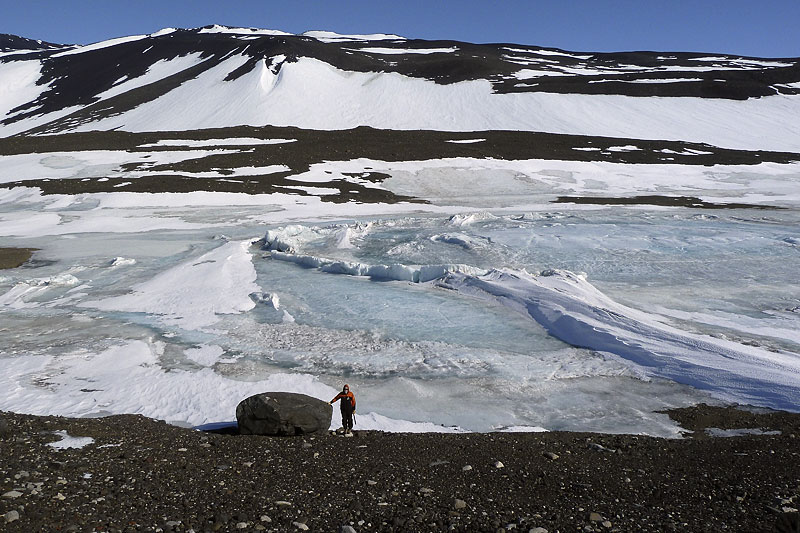 A 3m-long granite boulder on the ice shelf moraine. A string of lakes run between the main ice-cored moraine ridges and older moraine-covered slopes of Minna Bluff. | 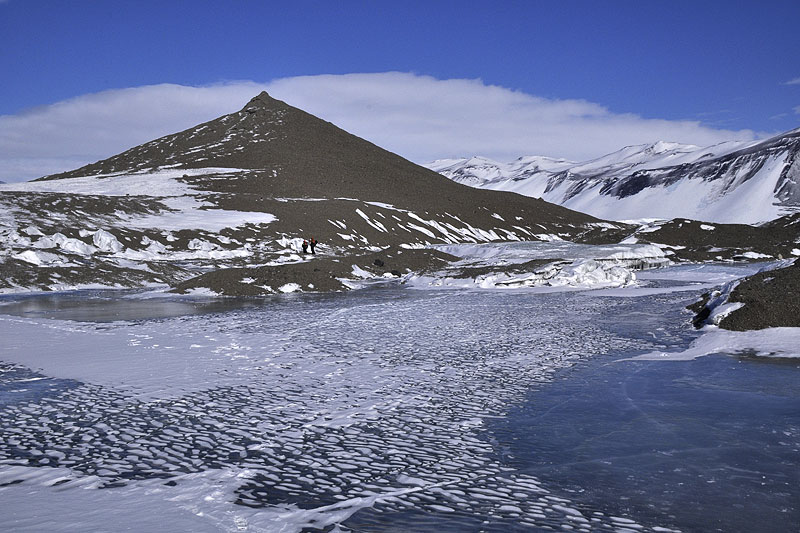 A pinnacle, over 10 m high, is a feature of the moraine extending into the ice shelf from Minna Bluff. The thicker layer of debris here has retarded the ablation of the underlying ice. | 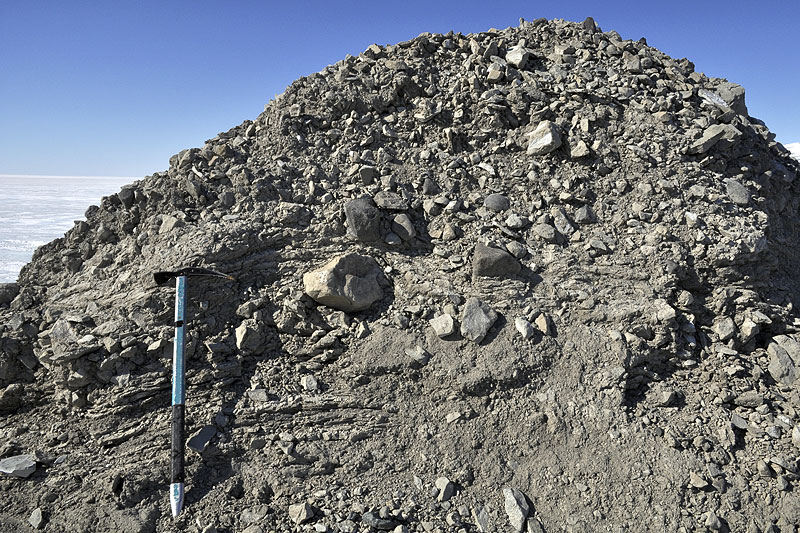 A 2-m thick section of relatively undisturbed sediment occurs at the top of the pinnacle. It represented a section of former sea floor that has been accreted to the base of the ice shelf during a grounding event. | 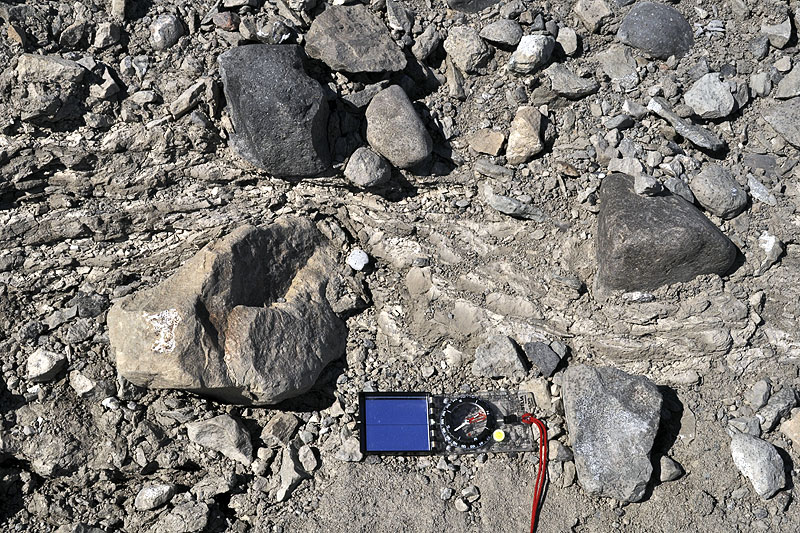 Boulder-sized dropstones in laminated sediments in the section at the top of the pinnacle. They represent iceberg-rafting during tidally influenced sedimentation in open water – a quite different glaciological regime compared with the present-day. |
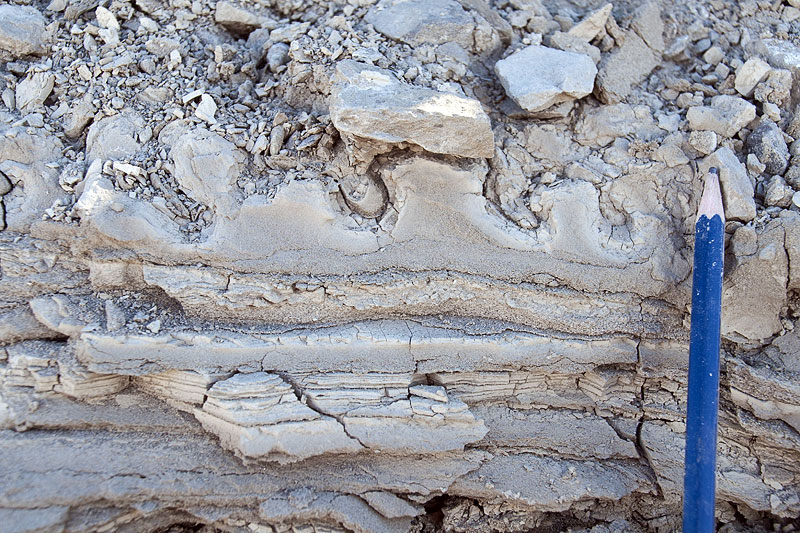 The undisturbed nature of the sediments at the top of the pinnacle is illustrated by these well-preserved load structures in the laminated horizon. | 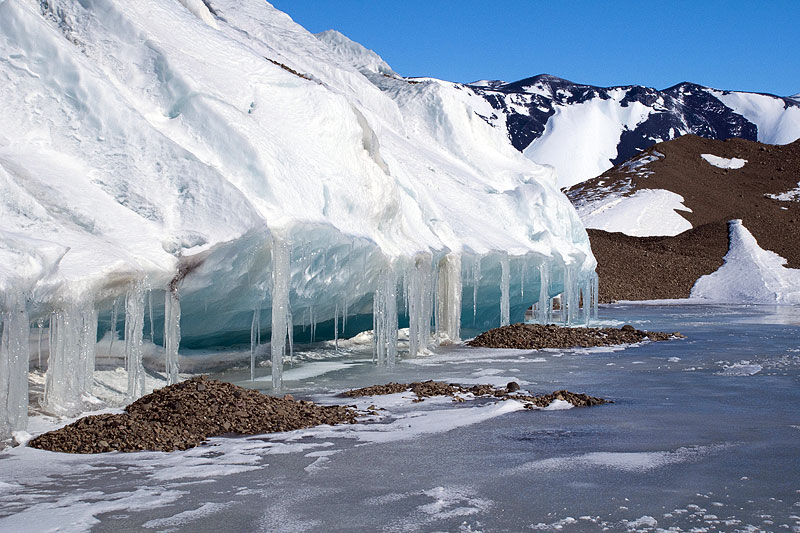 Icicles formed in an overhanging cliff bordering a water-course in the moraine extending north across the ice shelf from Minna Bluff. | 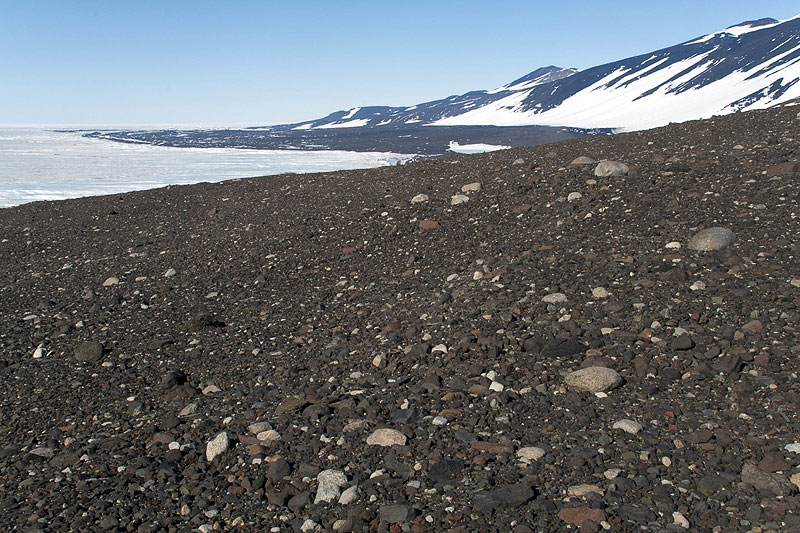 The ice-shelf moraines are composite. They include fresh-looking debris close to the ice edge, but highly weathered debris in older moraines on the slopes of Minna Bluff. The age of the moraines is unknown, but they are likely to be thousands of years old. | 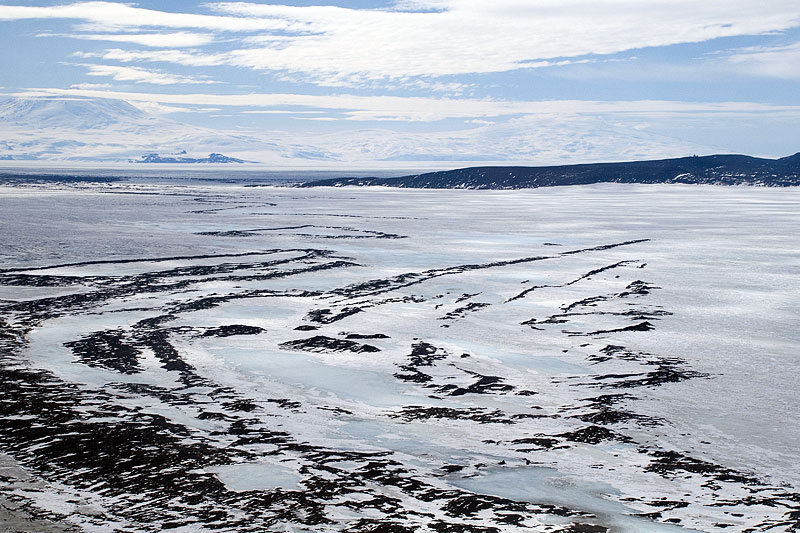 This aerial view of a zig-zag moraine is indicative of complex ice-shelf dynamics in the vicinity of Brown Peninsula. |
| Photos Michael Hambrey, November and December 2010. |